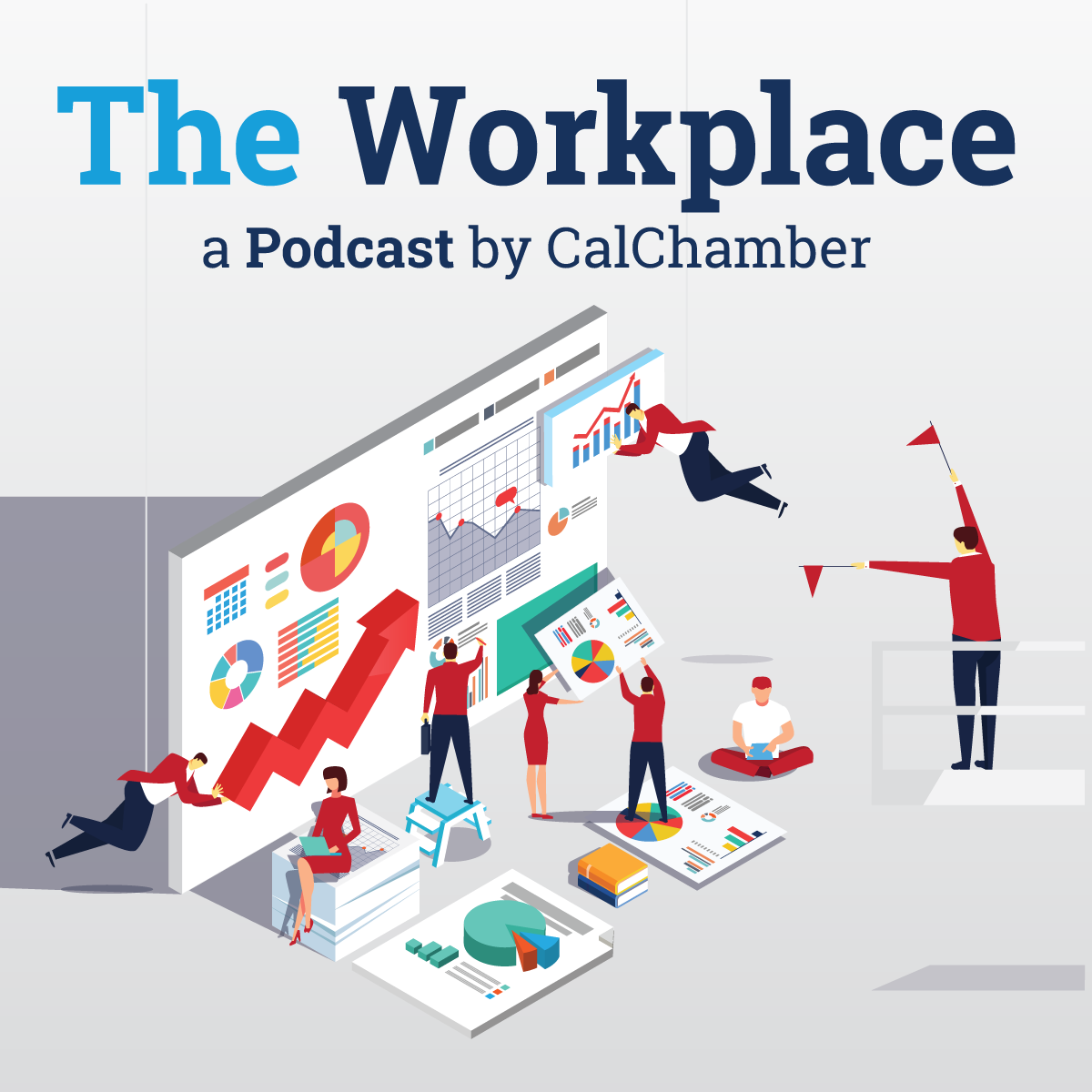
In Episode 94 of The Workplace podcast, CalChamber Executive Vice President and General Counsel Erika Frank and CalChamber policy advocate Robert Moutrie discuss the upcoming California Division of Occupational Safety and Health (Cal/OSHA) Board vote in November on pending emergency COVID-19 regulations and why the five-day public notice period given by the agency is problematic for employers.
Rushed Timeline
In November the Cal/OSHA Standards Board is expected to vote on emergency COVID-19 regulations (Petition 583) that will not be made public until five days before the Board vote, Moutrie tells Frank.
While the specifics of the regulations are not yet known, employers can expect them to be far reaching, affecting all workplaces that do not have to abide by the Aerosol Transmissible Diseases standards, he explains.
“If you don’t know what that means, then it covers you is the answer,” Moutrie says.
The most troubling part of this process is that the agency has stated that no advisory committee will be formed before the vote, giving virtually no time for employers and stakeholders to submit comments on the drafted regulations, he points out.
The advisory committee is typically where employers and stakeholders speak with Cal/OSHA staff and submit input, such as policy mistakes and inaccuracies, Moutrie explains. This process gives Cal/OSHA staff input from the stakeholders who are going to be subject to the regulations.
For example, he says, when wildfire smoke emergency regulations were being developed, the CalChamber met with the advisory committee five times over the course of a couple months and submitted numerous letters. In the end, many of the changes the CalChamber suggested made it into the emergency regulations the Board adopted.
In the case of these emergency COVID-19 regulations, however, the text will be published only five days before the Board meets for a vote, which is not a lot of time to get changes made. Even if employers are able to submit their comment letters within those five days, the timeline is too limited for Cal/OSHA staff to process the letters and rewrite the regulations before the Board votes, Moutrie says.
“Whatever the staff drafts now, which we cannot see and is being drafted in a kind of black box, is what the Standards Board is going to vote on,” he tells Frank.
Moreover, the regulations will have a lot of momentum coming into the vote because everyone wants to address COVID-19-related issues.
Short Compliance Window
Although it is not known how onerous the regulations will be, Moutrie expects the window for compliance to be short—likely as little as two weeks from the date of the vote.
Moutrie points out that rushing the comment period is not necessary given that the Standards Board has already been citing employers over COVID-19 safety under the guidance documents that have been drafted over the last eight months. In doing so, the agency has shown that it already has the authority to enforce the guidance rules. So why, he asks, should the process of enacting the emergency COVID-19 regulations be rushed?
It is hoped that the regulations will correspond closely to what already is required in existing guidance and employers should already be in compliance, Moutrie tells Frank.
Still, “employers should be on their toes come November,” he stresses.
Other Recent Podcast Episodes
• When Employees Talk Politics at Work.
• COVID-19: Moving Between Tiers.
Visit www.calchamber.com/theworkplace to listen or subscribe.

